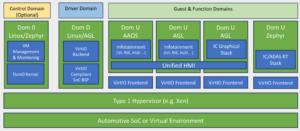Intel has unveiled new additions to its product portfolio for 5G and edge computing at Mobile World Congress 2021.
The tech firm also showcased multiple groundbreaking network deployments powered by its technology and Intel Network Platform.
The company noted that nearly all commercial virtual radio access network (vRAN) deployments are running on Intel technology. In the years ahead, it sees global vRAN base station deployments scale, from hundreds to “hundreds of thousands,” and eventually millions.
Dan Rodriguez, Intel corporate VP, Network Platforms Group, said: “Network transformation is critical to unleash the possibilities of 5G and maximize the rise of the edge to create new and better business outcomes for our customers across the globe.
“As the leading network silicon provider, we have been driving this shift to virtualising the core to access to edge, and implementing edge computing capabilities with our decade of experience, to power our society’s digital revolution.”
Intel believes operators desire a more agile, flexible infrastructure to unleash the full possibilities of 5G and edge as they address increased network demands from more connected devices. At the same time, the digitalisation of the world is creating new opportunities to use the potential of 5G, edge, artificial intelligence (AI) and cloud to reshape industries ranging from manufacturing to retail, healthcare, education and more.
According to a recent Intel survey of 511 information technology decision-makers, 78% believe 5G technology is crucial to keep pace with innovation.
These decision-makers also revealed that they view edge as one of the top three use cases for 5G in the next two years.
With Intel’s portfolio delivering feature-rich silicon and optimised software solutions, it hopes to tap into an estimated $65 billion edge silicon opportunity by 2025. Intel technology is already deployed in more than 35,000 end customer edge implementations.
By 2023, it is expected that 75% of data will be created outside of the data center – at the edge, in factories, in hospitals, in retail stores and across cities.
Intel Smart Edge consists of two software offerings for the multi-access edge computing layer that will now have a unified architecture and codebase to help customers onboard and manage edge applications and network functions, whether they want to buy a commercial solution or build their own solution.
Intel Smart Edge is commercial software focused on enterprise on-premise use cases, such as private networks and universal Customer Premise equipment. The evolved and enhanced Intel Smart Edge Open (formerly known as OpenNESS) is an open software toolkit that enables developers to build highly optimized and performant edge platforms.
Intel Agilex FPGA family is expanding, with a new FPGA with integrated cryptography acceleration that can support MACSec in 5G applications. This is said to add another layer of security to vRAN at the fronthaul, midhaul and backhaul levels.
Intel Ethernet 800 Series family is also expanding, with Intel’s first SyncE capable Ethernet Adapter that is designed for space-constrained systems on the edge, and well-suited for both high-bandwidth 4G and 5G RAN as well as other time- and latency-sensitive applications in sectors such as industrial, financial and energy.
Want to learn more about topics like this from senior executives in this space? Learn more at the Cloud in FinTech & Banking Summit[1], on October 13 2021, on how financial organisations are using cloud migration for competitive advantage.
References
^ Cloud in FinTech & Banking Summit (techforge.pub)^ edge computing (edgecomputing-news.com)^ mobile world congress (edgecomputing-news.com)



